#Engineering and technology research
Explore tagged Tumblr posts
Text

The International Journal of Recent Trends in Interdisciplinary Research (IJRTMR) Is A Bi-Monthly Peer-Reviewed, Refereed, Indexed International Research Magazine, So There Is a Broad Range of Publication Opportunities.
IJRTMR Is a Platform for All Scholars to Post Original Authoritative Research Papers, Essays, Research Projects, Reviews, Mini-Reviews, Case Studies, Synopsis, And Short International Journal Research Messages In A Variety Of Topics.
Authors are encouraged to submit entire unpublished and original works that are not currently being considered by other publications.
#Academic Open Access Journal#Double-Blind Peer-Reviewed Journal#Interdisciplinary Engineering Journal#Monthly Refereed Publication#Engineering and Technology Research#Original Study Articles#Technical Notes in Engineering#Peer-Reviewed Research Papers
0 notes
Text
It's mindbending to consider the amount of time and effort that goes into something as elaborate as this.
A testament of human engineering and creativity, digital or otherwise. 🤔
#pay attention#educate yourselves#educate yourself#knowledge is power#reeducate yourself#reeducate yourselves#think about it#think for yourselves#think for yourself#do your homework#do some research#do your own research#ask yourself questions#question everything#engineering#technology#you decide#music video#amazing
138 notes
·
View notes
Note
Ok, so since you're in gamedev, I'm curious about your perspective on patenting gameplay mechanics, like how the Ascend mechanic was patented prior to ToTK's release. I know Nintendo aren't the only ones doing this, but how common of a practice is that in general? And do you think there's any merit to it or no?
Heyyy sorry I was having a very busy week/weekend, so I kind of left this ask to the side given this is a pretty complicated subject, but here we go!!
So... Basically, my opinion is that it's mostly a bullying method for big corporations, and what seems like a tentative to protect one's work for smaller individuals/entities that they can't realistically enforce anyway. To me, and many devs, it's considered poor etiquette at the very least, especially given the highly iterative nature of gamedev and the extremely specific application of any given idea. The fact that the boundaries of tolerance and how aggressive a company will be at protecting what they feel they own (and here something as nebulous as an intellectual concept and context-less execution) will generally be blurry at best, especially since it's super hard to parse what could be considered inspiration VS what is derivative in a game mechanic, it tends to merely discourage innovation from smaller studios in that specific field, while still having bigger companies perhaps risking a lawsuit because they have already assessed they could cushion the consequences if it does come to that.
As often with copyright laws, but perhaps even moreso here, it dabbles in the corporate justice system, and it is a system that will always disproportionately protect the wealthy, the influencial and the powerful, while leaving people without resources extremely vulnerable. Imagine being a small studio trying to patent your cool mechanic, and then a giant like Riot Games waltz along and decides to steal your mechanic anyway. Can you afford the money to stay lawyered-up for years? Can you tolerate the stress of this David and Goliath situation, or existing in the public eye, or the potential smear campaigns, etc? And if you don't want to enforce your rights due to a lack of resources, your rights may as well not exist.
So I am personnally pretty much against the practice on this basis alone, even discounting how that approach runs counter to the very community-based spirit of game design and game studies. The goal of any self-respecting game designer should be to craft the best possible experience for players. It's good to protect yourself, your living, your place in history of course, but freezing the course of that history for little more than greed... It's not really well considered by a lot of devs that I know.
#thoughts#gamedev#patents#game design#of course there are counter-arguments that I'm more than willing to hear#but to me the potential downfalls of this practice far outweight the hypothetical and very circumstancial benefits#I think enforcing rules around credits and gamedev rights on the games they work on is a better approach than trying to patent stuff#(especially since patents tend to be held by companies over individuals --and losing control over a company is SO easy)#not to devalue the real engineering that goes on in really well polished/conceptualized mechanics#but tbh it's incredibly rare to have a mechanic working EXACTLY the same in two different games#there will always be things --even minor things-- that will have to be different#so it's not comparable with stealing graphic designs or exact characters or a chunk of technology imo#but that's just my opinion of course#and I'm extremely not a lawyer or a jurist or someone who knows the specifics of laws#it's mostly an opinion based on sparse research and conversations with colleagues
19 notes
·
View notes
Text
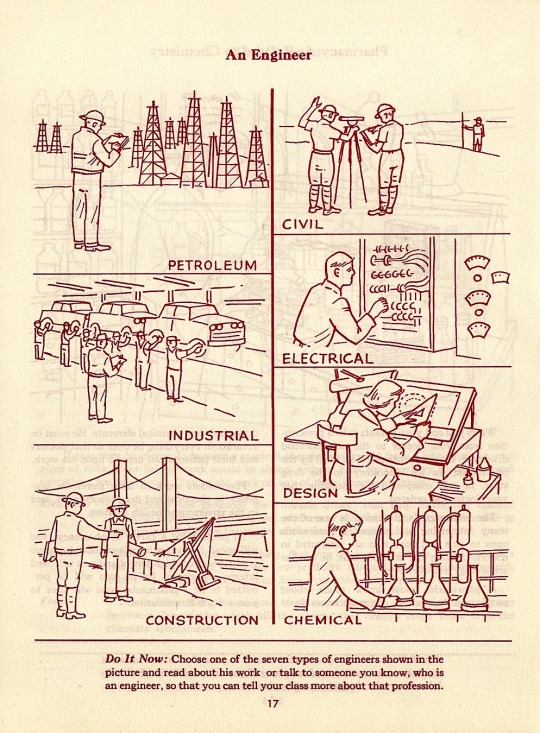
An engineer.
#We need engineers.#vintage illustration#engineers#engineering#science#math#technology#petroleum engineer#civil engineer#chemical engineer#computer engineer#electrical engineer#r&d#research & development#research#industry#mechanical engineer#biomedical engineer#aerospace engineer#vintage books#american industry
20 notes
·
View notes
Text
Applying for my Master's in gender studies kind of feels like shooting myself in the foot, but then again, it's not a useless discipline if it's being systematically censored and erased.
#not sure what research i could offer that has actual value#like i'm not doing scientific or health-related research. i'm not an engineer like all my relatives lol#i just like to think... and theorize..... what happened to all the theorists and philosophers?#seems like nowadays there's no point to grad school unless you're doing something stem or business related#annoying as fuck really.#i thought very hard about information technology and there's still time. i just have such a passion for gender/queer studies#too bad there aren't any programs that are just focused on queer/trans studies :)))))#and gender studies programs are at risk of being shut down. so that's awesome.#i still have some thinking to do....... because i don't want to shoot myself in the foot#like do i really want to work in higher education? do i reeeeally?#at the risk of sounding very arrogant i will say i'm not worried about my application if and when i do it#because i was easily the top student in my undergrad program and i have my current job to show for it#i've got great references and writing samples. just need a more concise idea for a research project...
13 notes
·
View notes
Text
Parallel Orbits: Exploring the Resemblance Between Atomic and Planetary Structures
The similarity between the structure of an atom and the structure of a planetary system is a fascinating topic that reveals the harmony and regularity present in both the microscopic and macroscopic realms of the universe. Although they are vastly different in scale, these two systems share some fundamental principles of organization and motion.
First, let's consider the structure of an atom. An atom consists of a central nucleus that houses protons and neutrons and a cloud of electrons orbiting around it. Electrons revolve around the nucleus in discrete orbits, referred to as energy levels or electron shells. This organization is akin to how planets orbit the Sun in a planetary system.
In a planetary system, the Sun represents the nucleus, while planets like Earth, Mars, and Jupiter, among others, orbit around it. Just like electrons in an atom, planets in our solar system follow specific and regular paths, maintaining a constant distance from their central stars. Moreover, gravitational force plays a fundamental role on both scales, keeping objects in orbit.
Another notable similarity is the concept of quantization. In atoms, electrons can only exist in specific orbits, meaning they have quantized energy levels. In the solar system, the energy of planets is also quantized, with each planet occupying a specific orbit. This quantized nature is one of the reasons why these systems are so stable and predictable.
Furthermore, the stability of these systems is maintained by a delicate balance of opposing forces. In atoms, the electrostatic attraction between protons and electrons is counteracted by the orbital motion of electrons. In the planetary system, the gravitational force pulling planets toward the Sun is balanced by the orbital motion of these celestial bodies.
Although the scales are vastly different, the similarity in organization and underlying principles between the structure of an atom and the structure of a planetary system is a remarkable demonstration of the universality of physical laws. These analogies also serve as captivating examples of the beauty of science and how the same natural laws apply in different contexts throughout the universe.
#science#biology#physics#chemistry#technology#education#space#engineering#nature#research#facts#nasa#astronomy#art#scientist#universe#knowledge#stem#medicine#love#memes#health#sciencememes#math#covid#cosmos#sciencefacts#india#study
65 notes
·
View notes
Text
Microbes Help Plants Beat the Shade
Shade avoidance responses are defined as the plastic responses of plants to neighboring shading signals through changes in the light spectrum, which limit planting density in modern agricultural practices.
Scientific World Research Awards Visit our page : https://scientificworld.net/ Nominations page : https://scientificworld.net/award-nomination/?ecategory=Awards&rcategory=Awardee
Get Connects Here ====================
You tube: https://www.youtube.com/@Scientificresearch-04 Instagram : https://www.instagram.com/swr_awards/ Blogger : http://scientificworldresearch.blogspot.com/ Linked In: https://www.linkedin.com/feed/ Tumblr: https://www.tumblr.com/blog/scientificworldresearch Twitter : https://x.com/SWR_Awards
#sciencefather#researcher#plants#microbes#scientific#biology#researchscientist#professor#lecture#scientist#scholar#analyst#engineering#physics#technology#coordinator#specialist#writer#assistant#associate#chemistry#statistics#maths#environment#datascientist#seniorscientist#juniorscientist#postdoctoralresearcher#labtechnician#viewers
2 notes
·
View notes
Text
i hate gen AI so much i wish crab raves upon it
#genuinely this shit is like downfall of humanity to me#what do you mean you have a compsci degree and are having chatgpt write basic code for you#what do you mean you are using it to come up with recipes#what do you mean you are talking to it 24/7 like it’s your friend#what do you mean you are RPing with it#what do you mean you use it instead of researching anything for yourself#what do you mean you’re using it to write your essays instead of just writing your essays#i feel crazy i feel insane on god on GOD#i would have gotten a different degree if i knew that half the jobs that exist now for my degree are all feeding into the fucking gen AI#slop machine#what’s worse is my work experience is very much ‘automation engineering’ which is NOT AI but#using coding/technology/databases to improve existing processes and make them easier and less tedious for people#to free them up to do things that involve more brainpower than tedious data entry/etc#SO ESPECIALLY so many of the jobs i would have been able to take with my work experience is now very gen AI shit and i just refuse to fuckin#do that shit?????
2 notes
·
View notes
Text
o(*≧▽≦)ツ🎉
#i passed my last exam!!!!!! with a 1.0 !!!!!!!#i now finished the whole studying part of this bachelor thing#only thing missing is a project report (which is just a literature summary for my ba)#and my Bachelor thesis#and then im done#i already talked with my prof ans she was like 'that is great research! just write it togther and youre done with that.'#and next month i will do all the analysis lab things at uni#and some food technology thing at home/work#and then put that in a somewhat comprehensive form#and after all that. sometime in september i think. i will be an engineer.#then i will properly celebrate but this milestone makes me really happy.#lu labert.
9 notes
·
View notes
Text

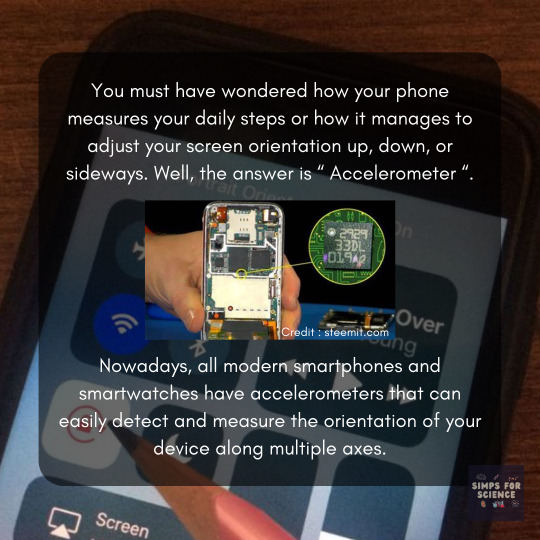
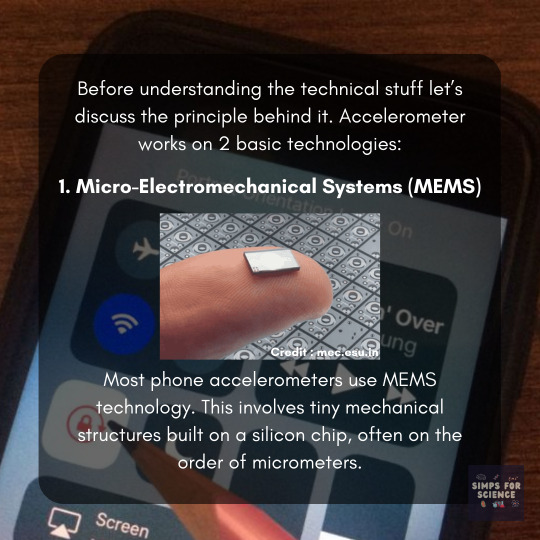
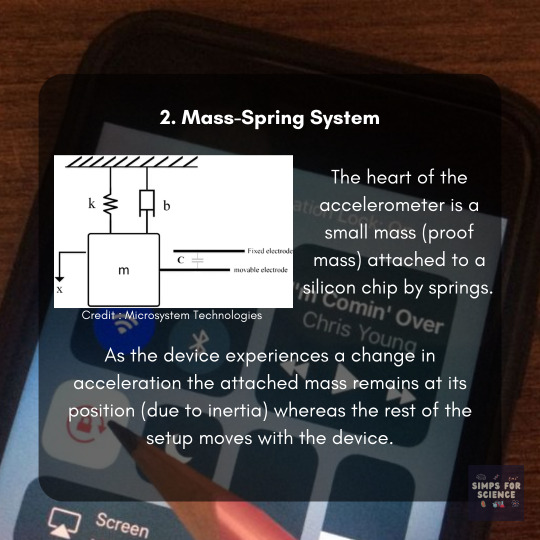
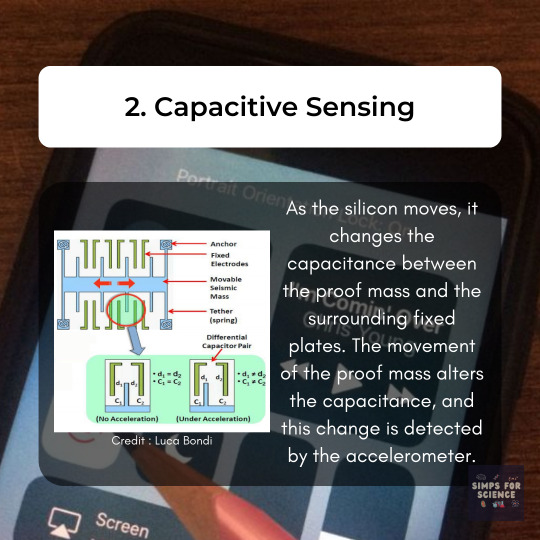
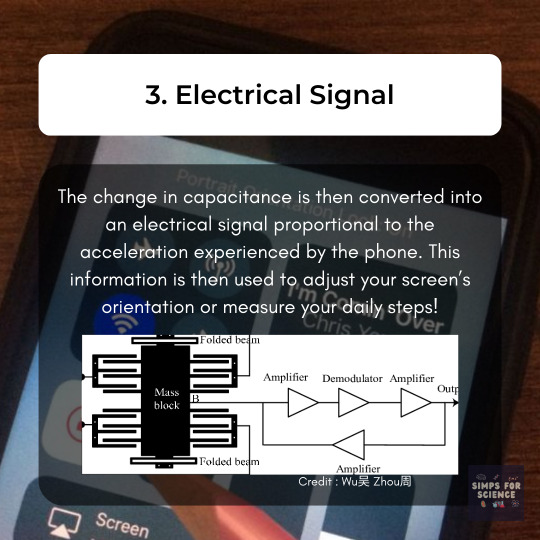
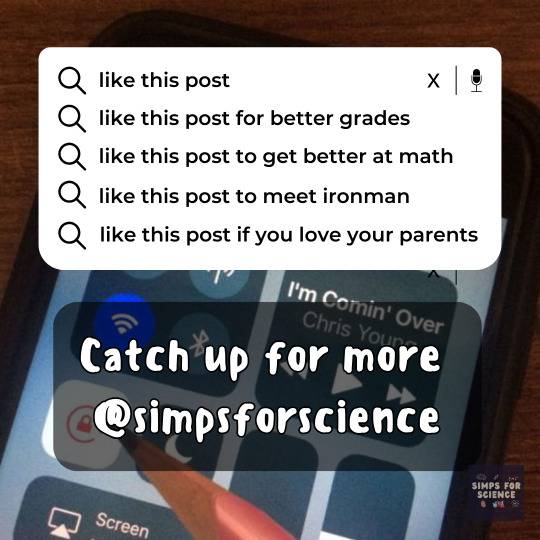
How does your phone 📲 know you turned into a landscape artist?👩🏻🎨 Can you outsmart its rotation sense? We notice this happen several times a day, sometimes wonder🤔 about the how and then let it just slip from the mind within a few seconds. Swipe through this post to unfold 📖the tech behind this magic trick !🪄🎩
#accelerometer#microelectronics#technology#techgeek#tech#phone#engineering#physics#devices#electronics#education#science#science facts#study blog#discover#scicomm#research scientist#explore#smartphone#smartwatch#capacitors#cool science#simps for science
11 notes
·
View notes
Text
Breaking the Cycle of Late Blight: How Biotech Potatoes are Revolutionizing Farming in Kenya
Discover how biotech potatoes are transforming farming in Africa and Asia, with breakthrough resistance to late blight disease and impressive yield improvements. Learn about the latest field trials of late blight-resistant biotech potatoes, offering a sustainable solution for smallholder farmers in Kenya and beyond. Explore the remarkable success of bio-engineered potatoes, which promise higher…
#AATF#African Agricultural Technology Foundation#agricultural biotechnology#Asante potato variety#biotech agriculture in Africa#biotech crop development#biotech potatoes#CIP#crop yield enhancement.#Feed the Future Global Biotech Potato Partnership#Food security#genetic engineering#International Potato Center#Kalro#Kenya Agricultural and Livestock Research Organization#Kenya potato trials#late blight resistance#Molo Nakuru County#Phytophthora infestans#potato crop innovation#potato disease control#potato disease management#potato farming#potato farming in kenya#potato field trials#potato yield improvement#Shangi potato variety#smallholder farmers#sustainable farming#Tigoni potato variety
6 notes
·
View notes
Text

The International Journal of Scientific Research in Engineering & Technology (e-ISSN: 2583-1240) is a bi-monthly, peer-reviewed, open-access, multidisciplinary online journal dedicated to advancing research across various fields of Science, Engineering, and Technology.
This international journal, established by academicians, educators, engineers, and industry professionals, aims to publish novel ideas and significant advancements in innovative research related to Science, Engineering, and Technology.
IJSREAT is a scholarly, peer-reviewed journal that supports both the academic and student communities. It provides a platform for submitting original research and applications in diverse engineering disciplines and innovative technologies.
#Latest advancements in engineering#Engineering and technology research#Academic medium for engineering research#Disseminating research results#Open-access peer-reviewed journal
0 notes
Text
ANNOUNCEMENT!
We have a website where we will be posting our new posts soon. Please start visiting this website for new updates and posts.
This is our new website: https://csmedworldinsights.wordpress.com
Please share this, reblog and comment!
#medical field#research#tech#health infomatics#software engineering#educational#college#high school#medicine#education#wordpress#blog#extracurricularactivities#important#writing#website#developer#website developers#stemblr#world#international#informative#technology#biomedical#biomedical engineering#healthcare#school#ai#coding#engineering
3 notes
·
View notes
Text
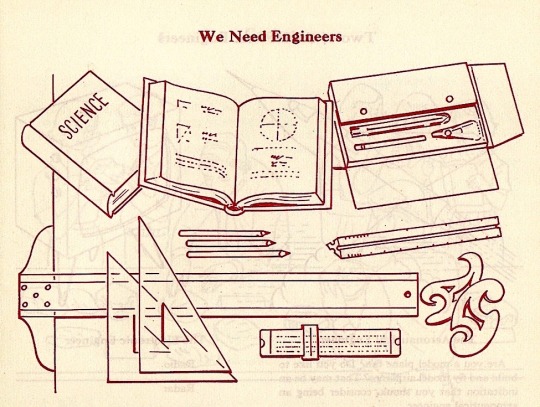
We need engineers.
#vintage illustration#engineers#engineering#science#math#technology#petroleum engineer#civil engineer#chemical engineer#computer engineer#electrical engineer#r&d#research & development#research#industry#mechanical engineer#biomedical engineer#aerospace engineer#vintage books#american industry
9 notes
·
View notes
Text
Toward a code-breaking quantum computer
New Post has been published on https://thedigitalinsider.com/toward-a-code-breaking-quantum-computer/
Toward a code-breaking quantum computer


The most recent email you sent was likely encrypted using a tried-and-true method that relies on the idea that even the fastest computer would be unable to efficiently break a gigantic number into factors.
Quantum computers, on the other hand, promise to rapidly crack complex cryptographic systems that a classical computer might never be able to unravel. This promise is based on a quantum factoring algorithm proposed in 1994 by Peter Shor, who is now a professor at MIT.
But while researchers have taken great strides in the last 30 years, scientists have yet to build a quantum computer powerful enough to run Shor’s algorithm.
As some researchers work to build larger quantum computers, others have been trying to improve Shor’s algorithm so it could run on a smaller quantum circuit. About a year ago, New York University computer scientist Oded Regev proposed a major theoretical improvement. His algorithm could run faster, but the circuit would require more memory.
Building off those results, MIT researchers have proposed a best-of-both-worlds approach that combines the speed of Regev’s algorithm with the memory-efficiency of Shor’s. This new algorithm is as fast as Regev’s, requires fewer quantum building blocks known as qubits, and has a higher tolerance to quantum noise, which could make it more feasible to implement in practice.
In the long run, this new algorithm could inform the development of novel encryption methods that can withstand the code-breaking power of quantum computers.
“If large-scale quantum computers ever get built, then factoring is toast and we have to find something else to use for cryptography. But how real is this threat? Can we make quantum factoring practical? Our work could potentially bring us one step closer to a practical implementation,” says Vinod Vaikuntanathan, the Ford Foundation Professor of Engineering, a member of the Computer Science and Artificial Intelligence Laboratory (CSAIL), and senior author of a paper describing the algorithm.
The paper’s lead author is Seyoon Ragavan, a graduate student in the MIT Department of Electrical Engineering and Computer Science. The research will be presented at the 2024 International Cryptology Conference.
Cracking cryptography
To securely transmit messages over the internet, service providers like email clients and messaging apps typically rely on RSA, an encryption scheme invented by MIT researchers Ron Rivest, Adi Shamir, and Leonard Adleman in the 1970s (hence the name “RSA”). The system is based on the idea that factoring a 2,048-bit integer (a number with 617 digits) is too hard for a computer to do in a reasonable amount of time.
That idea was flipped on its head in 1994 when Shor, then working at Bell Labs, introduced an algorithm which proved that a quantum computer could factor quickly enough to break RSA cryptography.
“That was a turning point. But in 1994, nobody knew how to build a large enough quantum computer. And we’re still pretty far from there. Some people wonder if they will ever be built,” says Vaikuntanathan.
It is estimated that a quantum computer would need about 20 million qubits to run Shor’s algorithm. Right now, the largest quantum computers have around 1,100 qubits.
A quantum computer performs computations using quantum circuits, just like a classical computer uses classical circuits. Each quantum circuit is composed of a series of operations known as quantum gates. These quantum gates utilize qubits, which are the smallest building blocks of a quantum computer, to perform calculations.
But quantum gates introduce noise, so having fewer gates would improve a machine’s performance. Researchers have been striving to enhance Shor’s algorithm so it could be run on a smaller circuit with fewer quantum gates.
That is precisely what Regev did with the circuit he proposed a year ago.
“That was big news because it was the first real improvement to Shor’s circuit from 1994,” Vaikuntanathan says.
The quantum circuit Shor proposed has a size proportional to the square of the number being factored. That means if one were to factor a 2,048-bit integer, the circuit would need millions of gates.
Regev’s circuit requires significantly fewer quantum gates, but it needs many more qubits to provide enough memory. This presents a new problem.
“In a sense, some types of qubits are like apples or oranges. If you keep them around, they decay over time. You want to minimize the number of qubits you need to keep around,” explains Vaikuntanathan.
He heard Regev speak about his results at a workshop last August. At the end of his talk, Regev posed a question: Could someone improve his circuit so it needs fewer qubits? Vaikuntanathan and Ragavan took up that question.
Quantum ping-pong
To factor a very large number, a quantum circuit would need to run many times, performing operations that involve computing powers, like 2 to the power of 100.
But computing such large powers is costly and difficult to perform on a quantum computer, since quantum computers can only perform reversible operations. Squaring a number is not a reversible operation, so each time a number is squared, more quantum memory must be added to compute the next square.
The MIT researchers found a clever way to compute exponents using a series of Fibonacci numbers that requires simple multiplication, which is reversible, rather than squaring. Their method needs just two quantum memory units to compute any exponent.
“It is kind of like a ping-pong game, where we start with a number and then bounce back and forth, multiplying between two quantum memory registers,” Vaikuntanathan adds.
They also tackled the challenge of error correction. The circuits proposed by Shor and Regev require every quantum operation to be correct for their algorithm to work, Vaikuntanathan says. But error-free quantum gates would be infeasible on a real machine.
They overcame this problem using a technique to filter out corrupt results and only process the right ones.
The end-result is a circuit that is significantly more memory-efficient. Plus, their error correction technique would make the algorithm more practical to deploy.
“The authors resolve the two most important bottlenecks in the earlier quantum factoring algorithm. Although still not immediately practical, their work brings quantum factoring algorithms closer to reality,” adds Regev.
In the future, the researchers hope to make their algorithm even more efficient and, someday, use it to test factoring on a real quantum circuit.
“The elephant-in-the-room question after this work is: Does it actually bring us closer to breaking RSA cryptography? That is not clear just yet; these improvements currently only kick in when the integers are much larger than 2,048 bits. Can we push this algorithm and make it more feasible than Shor’s even for 2,048-bit integers?” says Ragavan.
This work is funded by an Akamai Presidential Fellowship, the U.S. Defense Advanced Research Projects Agency, the National Science Foundation, the MIT-IBM Watson AI Lab, a Thornton Family Faculty Research Innovation Fellowship, and a Simons Investigator Award.
#2024#ai#akamai#algorithm#Algorithms#approach#apps#artificial#Artificial Intelligence#author#Building#challenge#classical#code#computer#Computer Science#Computer Science and Artificial Intelligence Laboratory (CSAIL)#Computer science and technology#computers#computing#conference#cryptography#cybersecurity#defense#Defense Advanced Research Projects Agency (DARPA)#development#efficiency#Electrical Engineering&Computer Science (eecs)#elephant#email
5 notes
·
View notes
Text
Becoming an engineer because you love science?
Broke
Becoming an engineer because you want to make money?
Gay
Becoming an engineer so you can hate technology more accurately?
Bespoke
2 notes
·
View notes